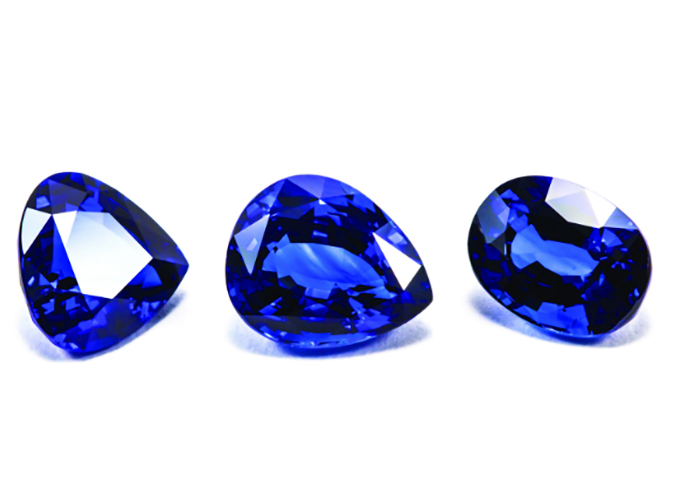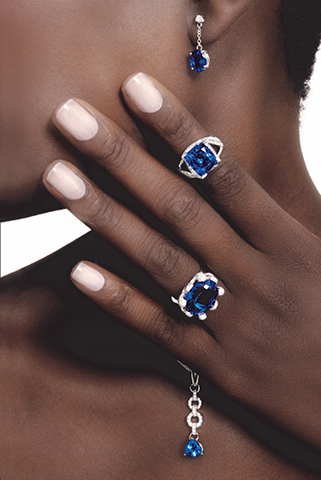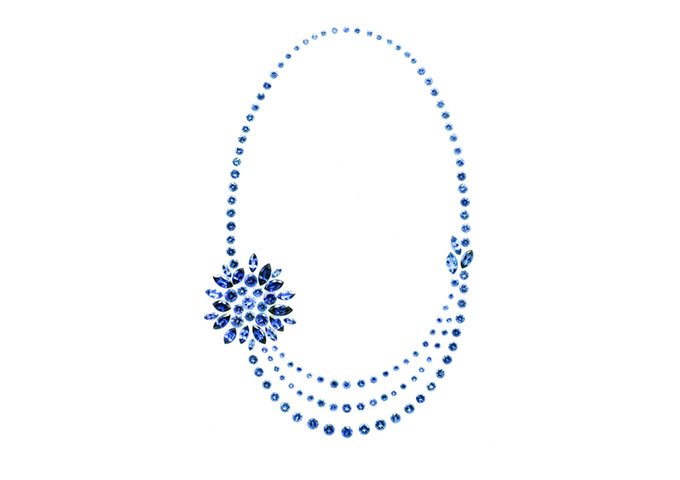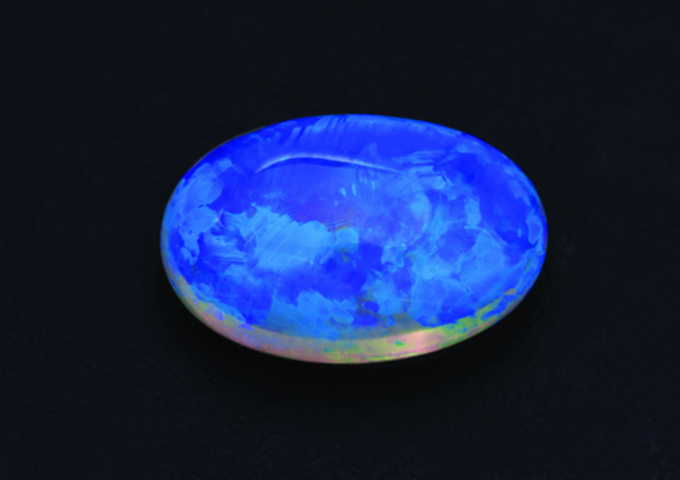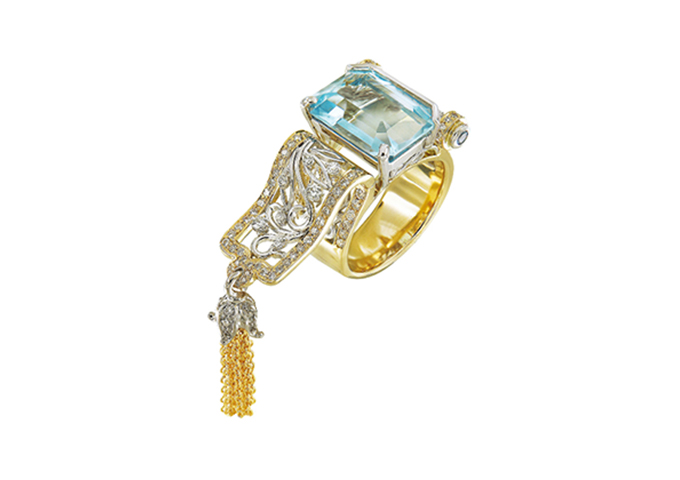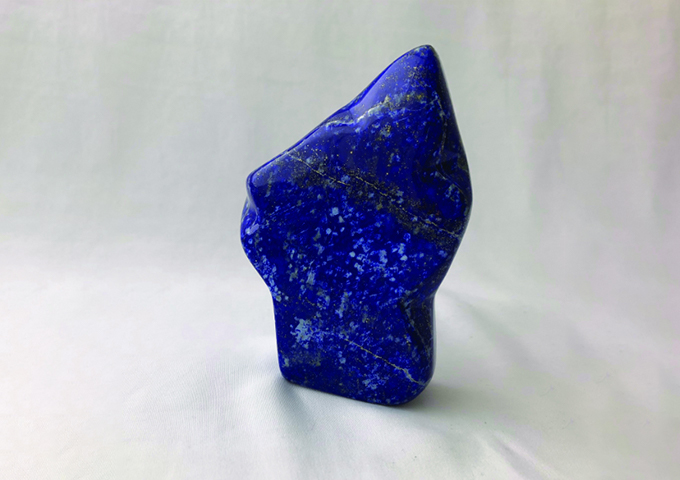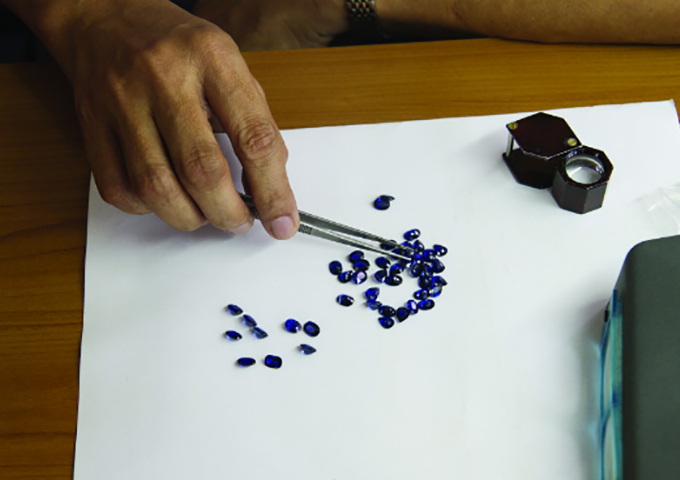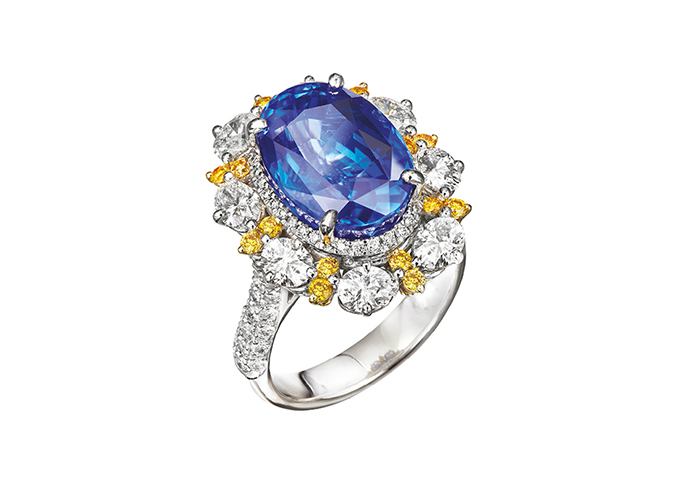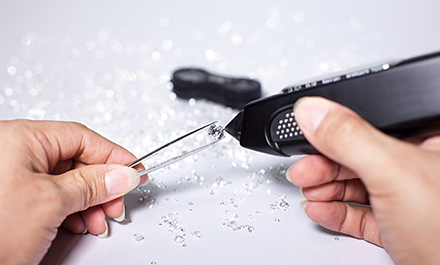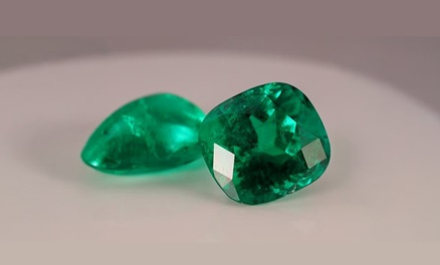Sapphires are shining brighter than ever in the fine jewellery sector after ‘Classic Blue’ was named colour of the year by the Pantone Color Institute. Other blue gems are also gaining traction in the trade, proving once more that blue is dynamic as it is timeless.
There is perhaps no other colour as universal as blue. Regarded as both regal and rebellious, blue is also masculine yet feminine; strong yet subtle; mysterious yet reliable. This versatility that transcends genders, emotions and character has helped build a solid reputation for blue gemstones in the jewellery trade.
Allure of blue
Sapphires, hailed as the epitome of blue gems, have adorned monarchs for many centuries so it's no wonder that consumers associate this colour with royalty and opulence. How far have blue sapphires taken the world of fine jewellery?
Possibly the most popular sapphire in recent history is the 12-carat sapphire engagement ring given by Prince William to now Duchess of Cambridge, Kate Middleton, according to the Gemological Institute of America (GIA). The ring was first worn by Princess Diana.
Another famous sapphire is the 62.02-carat rectangular step-cut Rockefeller Sapphire from Myanmar. The stone, acquired in 1934 by financier and philanthropist John D. Rockefeller, Jr. from an Indian maharaja, was recut and remounted over the years, noted GIA.
Amid increasingly challenging scenarios, the market's affection for blue gems has endured. In fact, the Pantone Color Institute has named Classic Blue as the colour of the year in 2020, reinforcing the trend.
Mehul Patel, managing director at gemstone dealer Krish Creations Co Ltd, said blue sapphires have always been a timeless choice in the gemstone world, with steady demand from major markets such as the US, Europe and Asia.
“Compared to rubies, sapphires are more accessible and competitively priced,” remarked Patel. “Demand is stronger than ever, especially for smaller, calibrated stones from Sri Lanka and Madagascar. No-heat Burmese and Sri Lankan stones of 5 carats and up are likewise highly favoured.”
Top-quality sapphires sell for around US$100,000 per carat while commerical goods cost around US$400 a carat.
Phuket Khunaprapakorn, president of gemstone specialist Gemburi Co Ltd, meanwhile said blue sapphires have consistently been sought after for many years due to their limited supply, particularly good-quality stones.
Single gems and calibrated sizes are still desired by traders and jewellery manufacturers while some buyers opt for very small-sized stones.
Faceted blue sapphires are mainly supplied by Thailand and Sri Lanka while Madagascar and Nigeria are good sources of rough stones. Special stones from Kashmir and Myanmar are relentlessly popular but becoming scarcer, revealed Khunaprapakorn.
Buyers on the lookout for deep blue, faceted variants meanwhile may seek out Australian and Chinese blue sapphires.
Sourcing fine-quality sapphires isn't the only challenge that industry players are facing, according to Markus Paul Wild of German gemstone trader Paul Wild. With a more discerning clientele comes the demand for more innovative designs and layouts, he noted.
Other blue gems
Apart from sapphires, the industry also offers other gem varieties bearing the colour blue in different hues such as aquamarine, blue topaz, lapis lazuli, predominantly blue Australian opal, blue spinel, blue zircon, Peruvian opal and turquoise, according to Clement Sabbagh, president of the International Colored Gemstone Association (ICA). These gems are available in a wide range of price points, from affordable to high-end goods.
Tanzanites are also strong contenders in the blue gemstone cluster, with traders, collectors and jewellery designers actively seeking out these stones.
While the world faces a deluge of macroeconomic and geopolitical uncertainties, Sabbagh said he expects steady demand for gemstones and jewellery from the US, India and China. Business in Europe is likewise expected to pick up.
This fascination for blue will also extend to other sectors, including the fashion industry.
“We expect sturdy demand for these stones by jewellery houses,” commented the ICA official. “Blue gems in general have been among the best selling in our industry. Blue carries a calming effect, which is beneficial to the mind and body. It is also associated with faith and stability.”
Opals likewise fall within the blue gemstone category, especially those that contain mainly blue tones and patterns. This type of opal will meld perfectly with classic blue fabrics and accessories, stated Andrew Cody of Australia-based Cody Opal.
The gemstone trader also expects to see opals figuring a great deal in high jewellery collections this year alongside marine-inspired motifs such as jellyfish, octopus and fish.
At present, prices for largely blue opals range from US$50 to US$5,000 per carat. Opals enjoy steady popularity in the US, Europe and China, noted Andrew.
“Classic blue is a strong, fresh and crisp colour, which works well with precious white metals. We are already fielding enquiries for opals of this colour and we expect that the market will embrace this theme,” he continued.
Jewellery in blue
Apart from their timeless appeal, blue sapphires are also viewed by many as investment vehicles, especially untreated stones. Buyers often look for specific sizes, colours and certifications as well, disclosed Achillea Teng of Singapore-based jeweller Caratell Pte Ltd.
Non-heated blue tanzanites are also preferred by traders and jewellers, she added.
Pantone's decision to assign Classic Blue as this year's colour may result in bolstered awareness of blue gems, which could benefit commercial items. The impact will be less on investment gems such as non-heated cornflower blue Kashmir sapphires, which are always in demand no matter the trend.
Teng cited growing interest among buyers, millennials in particular, in “fun” colours and non-traditional materials hence stronger demand for indicolite, Paraiba tourmaline, aquamarine and spinel.
The market is also becoming more receptive to rare gems such as benitoite, which GIA defines as a typically colourless to blue barium titanium silicate found in San Benito County, California. In fact, benitoite has gained the attention of connoisseurs due to its vivid blue shades that are comparable to sapphire.
The colour blue also lends further versatility to a jewellery piece since every shade reflects different concepts such as tranquillity, royalty or truthfulness. “We also observed rising demand for blue engagement rings, so we expect higher sales of blue sapphire rings throughout the year,” noted Teng.


